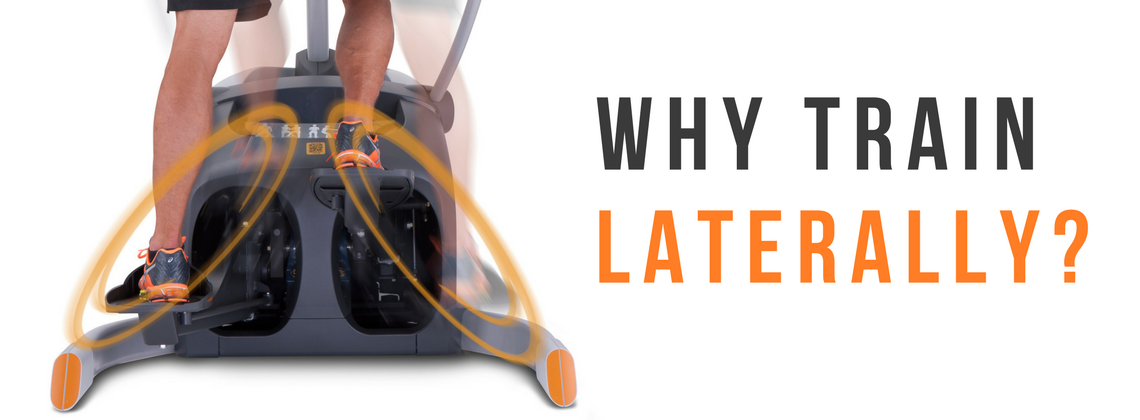 Most cardiovascular equipment incorporates solely linear (forward and back) motion, where the body performs flexion and extension in the sagittal plane. Consider walking or running on a treadmill, riding a stationary bike, rowing, elliptical training, and climbing stairs. These activities incorporate virtually no side-to-side movement. While much of our daily movement indeed takes place in the sagittal plane, we also move in two other planes – the frontal plane for lateral movement and the transverse plane for rotational motion – which also are prominent in athletic activities.
Most cardiovascular equipment incorporates solely linear (forward and back) motion, where the body performs flexion and extension in the sagittal plane. Consider walking or running on a treadmill, riding a stationary bike, rowing, elliptical training, and climbing stairs. These activities incorporate virtually no side-to-side movement. While much of our daily movement indeed takes place in the sagittal plane, we also move in two other planes – the frontal plane for lateral movement and the transverse plane for rotational motion – which also are prominent in athletic activities.
Although these cardio machines are all great options for exercise, they are limited due to their forward-backward motion. It’s also important to train with lateral movement and rotation to promote greater overall conditioning and sports performance. Muscles need to be stressed in all movement capacities to increase and maintain strength.
When we address lateral motion, we are referring mainly to the core and lower body, which drives this movement. Certainly, the upper body can play a role as well, but the focus here is the core, glutes, hips, legs and feet.
The primary muscles include:
- Glutes and hips – gluteus maximus, minimus and medius
- Outer and inner thighs – abductors and adductors
- Lower leg and feet – peroneals
- Core – rectus abdominis, internal and external obliques, transverse abdominus, erector spinae, quadratus lumborum
Benefits of Lateral Training
If you love to run or are an indoor cycling addict, why train laterally?
- Improved muscle balance
- Greater agility
- Stronger joints with better alignment
- Decreased risk of injury
- Enhanced athletic performance
- Increased balance
- Better overall fitness
The bottom line is that the human body is designed to move, and we need to incorporate motion in all directions for optimum function and conditioning. Athletes who play football, basketball, tennis, hockey and soccer also benefit from training that mimics movement on the field or court.
How to Train Laterally
Lots of options exist today to facilitate lateral training, some with unlimited applications based on your creativity.
- The Slide — One of the original training tools, this was a slippery vinyl board on which you wore booties to push the body back and forth from bumper to bumper. These lateral training accessories still exist today, although they aren’t as popular as they once were in group exercise classes. The beauty of slide boards is that virtually anyone can use them and they are low-impact, so you’re not subject to stressful pounding. You may find one at your health club or rec center, or it’s easy to purchase online for use at home.
- Gliding disks – A fancy version of paper plates, gliding disks let the legs operate independently in movements like side steps, abduction, adduction, side squats, forward or rear lunges, walking planks and much more. Some are designed to work on floors, with a separate version for carpeted surfaces.
- LateralX – This lateral trainer from Octane Fitness is a great way to add side-to-side workouts. With 30 resistance levels and 10 lateral width adjustments, the LateralX has been shown to increase caloric expenditure by 27% and boost abductor and adductor activity by 30% when going from lateral width 1 to 10. Adjustable 3-D motion lets you combine a traditional stepping movement with lateral movement for more efficient, effective workouts.
- Calisthenics – Put together your own routine with side steps and hops, side walking with a resistance band, lateral lunges and leaps, speed skate jumps, carioca, shuffles and more.
- Inline skating – This is a fun, low-impact way to work laterally outdoors. Even as you move forward, your legs move laterally with each push-off.